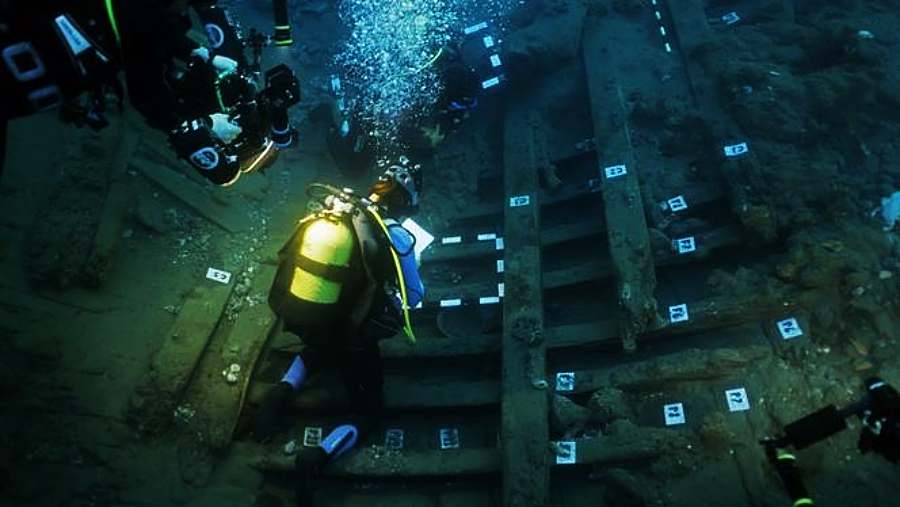![]() All the evidence suggests that the ship sank after a battle in the second half of the 17th century. / Photo: AA
All the evidence suggests that the ship sank after a battle in the second half of the 17th century. / Photo: AA
Sun 13 October 2024:
The wreck yields 14 Janissary rifles, approximately 2,500 lead marbles, exploded cannonballs and sets of blue-painted porcelain bowls thought to have been made in China for Islamic markets.
Significant artefacts linked to the Ottoman Empire have been uncovered in the ongoing excavation of the Kizlan Ottoman shipwreck off the coast of Datca in southwestern Türkiye, shedding light on the historical period in which the ship sank.
According to a statement from the Ministry of Culture and Tourism, the excavation is being conducted by Dokuz Eylül University’s Underwater Research Center (SUDEMER) as part of the Blue Heritage Project.
This year’s excavations have yielded significant findings that shed light on the ship’s identity and the period in which it sank.
Among the discoveries are 14 muskets belonging to the Janissaries, around 2,500 lead bullets, and exploded cannonballs, indicating that the ship was involved in a battle.

A set of blue-painted porcelain bowls, believed to have been produced by China for the Islamic markets, suggests that the ship might have been on a special mission or diplomatic task. (AA)
In addition, a set of blue-painted porcelain bowls, believed to have been produced by China for the Islamic markets, suggests that the ship might have been on a special mission or diplomatic task.
The fact that the porcelain was found packed indicates that it was probably a gift.
Personal items believed to have belonged to the crew and soldiers have also been recovered, including pipes, boxwood combs, copper pots, ceramic jugs and jars.
The presence of ceramics from the Djerba region of Tunisia suggests that the ship may have originated in North Africa.
The Kizlan shipwreck is historically significant as it is the first time that the remains of an Ottoman ship carrying Janissary soldiers have been discovered in Turkish waters.

The excavations are expected to be completed by 2025, and the discoveries are expected to shed new light on Ottoman maritime history. (AA)
Fragments of the starboard side of the ship have been found, providing valuable insight into the ship’s construction techniques.
All the evidence suggests that the ship sank after a battle in the second half of the 17th century.
The excavations are expected to be completed by 2025, and the discoveries are expected to shed new light on Ottoman maritime history.
-Source: TRT
__________________________________________________________________________

https://whatsapp.com/channel/0029VaAtNxX8fewmiFmN7N22
__________________________________________________________________________
FOLLOW INDEPENDENT PRESS:
WhatsApp CHANNEL
https://whatsapp.com/channel/0029VaAtNxX8fewmiFmN7N22
![]()
TWITTER (CLICK HERE)
https://twitter.com/IpIndependent
FACEBOOK (CLICK HERE)
https://web.facebook.com/ipindependent
YOUTUBE (CLICK HERE)
https://www.youtube.com/@ipindependent
Think your friends would be interested? Share this story!





